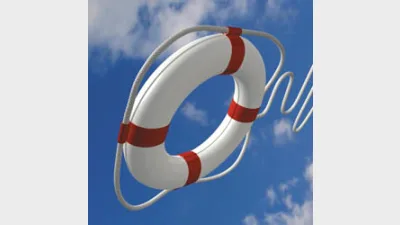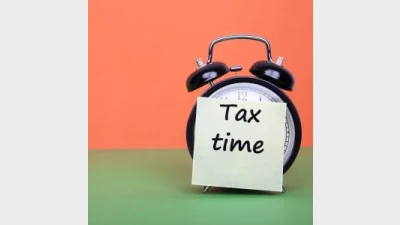Natural disasters: Extending a helping hand



Natural disasters have been at the forefront of Australian news recently. Graeme Colley explains the role of government assistance in helping people get back on their feet.
The recent catastrophes experienced throughout Australia have raised many issues ranging from the types of assistance available at the Federal and State levels to the adequacy of life and general insurance.
While insurance depends on the type of risk covered by the policy, the assistance provided at various government levels is designed to contribute to the costs relating to the disaster as well as income support for those affected.
There are also a number of agencies that provide information about how to get things back to normal, including disposing of damaged property and cleaning the property.
Australian Government Disaster Recovery Payment
There are a number of payments available at the Federal Government level.
The main payments are the Australian Government Disaster Recovery Payment (AGDRP) and the Disaster Income Recovery Subsidy (DIRS). The AGDRP is a one-off payment of $1,000 for adults and $400 for children.
The payment is available if a person:
- has been seriously injured;
- is an immediate family member of an Australian killed as a direct result of the disaster;
- has their principal place of residence destroyed or sustain major damage;
- is unable to gain access to their principal place of residence for a period of 24 hours or more;
- is stranded in their principal place of residence for a period of 24 hours or more;
- has a principal place of residence without electricity, water, gas, sewerage, sewerage services or another essential service for at least 48 hours; or
- is the principal carer of a dependant child who has experienced any of the above events.
Flexible arrangements have been established for claiming the AGDRP. Claims can be lodged with any Centrelink customer service centre, Medicare office or local government evacuation/recovery centre by phone or fax. Claims must be lodged by 16 July 2011.
Disaster Income Recovery Subsidy
The DIRS is a payment to assist employees, small business and primary producers who have lost income as a direct result of the flooding or severe weather that began on 29 November, 2010 in Queensland, New South Wales, Victoria, South Australia and Western Australia.
The payment is equal to the maximum rate of Newstart Allowance, which from 1 January, 2011 is $469.70 per fortnight for a single person and $424 for each member of a couple.
To qualify for the DIRS the person must:
- derive income from an area affected by the disaster or live in an area affected by the disaster;
- be 16 years or older and not a dependant child;
- be either an Australian resident and living in Australia for the period they are in receipt of the DIRS, or a foreign national living or working in Australia at the time of the disaster and for the period of receipt of the DIRS;
- have experienced a loss of income as a direct result of the disaster and be able to show evidence supporting the loss within 28 days;
- not be, at the time of lodgement of the claims, receiving another income support payment or pension (such as the age pension, Newstart Allowance, pension from the DVA or an Exceptional Circumstances Income Relief Payment); and
- be able to claim, in their own right, if they are a member of a couple.
Claiming the DIRS is the same as for the AGDRP. These DIRS payments are tax exempt.
Other assistance
Centrelink has established special arrangements for some customers who are in areas designated as areas affected by the catastrophe.
These arrangements allow people who live in certain postcodes affected by the disaster to lodge the information by phone if they are unable to attend the relevant Centrelink Customer Service Centre.
In addition to the AGDRP and DIRS payments other assistance is available from various government agencies:
- small businesses operating outside of hand-held mobile phone coverage can apply for the Satellite Phone Subsidy Scheme of up to $1,000;
- families affected by a crisis or disaster can receive up to 13 weeks of the Special Child Care benefit during a financial year for each child in approved child care;
- the Australian Taxation Office will fast track refunds for taxpayers in disaster affected areas and will delay the collection of information and payments; and
- the Australian Passport Office will replace lost or damaged passports free of charge.
Each State government is able to provide a range of assistance to anyone affected by a natural disaster.
Queensland Government assistance
The Queensland government provides various levels of assistance for those affected by natural disasters, ranging from hardship grants to low-interest loans for small business owners and primary producers.
Personal Hardship Assistance Grant
Personal Hardship Assistance may be available to those who do not have the capacity to meet immediate, unexpected basic costs for food, clothing, medical supplies or accommodation caused by the disaster. The grant of $170 per person is not means tested and is limited to $850 for a family of five or more.
Essential Household Contents Grant
The Essential Household Contents Grant may be available to people who own essential household contents that have been lost or damaged in the disaster and who do not have contents insurance. The grant includes cooking utensils, clothing, bedding, linen, floor coverings, essential furniture, white goods and food lost due to storm damage. Maximum limits may apply.
This grant is an income tested once-off payment of up to $1,705 per adult, up to a maximum of $5,120 for a couple/family. Eligibility is assessed by departmental officers visiting the damaged premises.
Structural Assistance Grant
A Structural Assistance Grant, which provides a contribution towards repair of the residence to a habitable and secure condition, may be available to property owners whose home has been damaged by the disaster. The home must be uninsured for the disaster, owned by the applicant and be their sole place of residence at the time of the disaster.
This grant is an income and assets means tested once-off payment of up to $10,500 per individual, and up to $14,200 for a couple/family, less amounts paid as an Emergent Assistance Grant and/or Essential Household Contents Grant. Eligibility is assessed by departmental officers visiting the damaged premises.
Loans and subsidies
Those in qualifying areas can apply for concessional interest rates on loans of up to $250,000 and freight subsidies of up to $5,000.
Clean up and recovery assistance
Those in qualifying areas can apply for grants of up to $5,000 ($20,000 for primary producers and small business owners)
NSW Government assistance
Under the NSW Government’s Personal Hardship and Distress Assistance, grants are available for those eligible whose homes and essential household items have been destroyed or damaged by a natural disaster. People with limited financial resources and no insurance may be eligible for assistance for essential household items and structural repairs to the home.
Primary producers — loans
Loans of up to $130,000 are available to eligible primary producers at concessional interest rates of 2.77 per cent per annum. The loans may be used to allow the primary producer to carry-on farming and to replace and repair damage not covered by insurance.
Primary producers — transport subsidies
Freight subsidies of up to 50 per cent for the cost of carriage of livestock and fodder are available. The maximum subsidy is $15,000.
Small businesses
Where a small business is affected by natural disasters and unable to obtain assistance through normal lending channels, loans of up to $130,000 are available at a concessional rate of 2.77 per cent.
Motor Vehicle Stamp Duty Relief
Cars that have been written off as a result of a natural disaster may be eligible for a refund of stamp duty on their replacement vehicle. Refunds are available where the vehicle written off was comprehensively insured and the insurance does not cover duty for a replacement vehicle.
Government assistance in Victoria
Personal Hardship and Distress Assistance is available for those who qualify in declared areas. The following grants are available:
- Emergency grants of up to $1,067 to provide assistance to meet immediate basic needs — no means testing applies;
- Temporary Living Expense Grants of up to $8,650 to assist households with the cost of temporary accommodation and living expenses — means testing applies; and
- Re-establishment Grants of up to $8,650 for repairs to structural damage to a residence and $8,650 to replace essential household contents such as furnishings and electrical goods — means testing applies.
The Clean-up and Restoration Grant of up to $15,000 is available as a one-off grant to primary producers, small businesses and not-for-profit organisations who have suffered direct damage as a result of the flooding for the clean-up, removal of debris, animal welfare and business restoration.
Low-interest loans are also available to eligible small businesses and primary producers to allow them to continue to operate.
Graeme Colley is national technical manager at OnePath.
Recommended for you
When entering paid employment, it’s not long before we are told that we’ll need to lodge a tax return but there are times when a person will be excepted.
Anna Mirzoyan examines how grandfathering affects income support payments and how factors such as paying for aged care can impact them.
There are specific requirements that only apply to trustees of self-managed superannuation funds, writes Tim Howard, including the allocation in their investment strategy.
Investments bonds offer a number of flexible, tax-advantaged benefits, writes Emma Sakellaris, but these are often overlooked as old fashioned when it comes to portfolio allocations.











